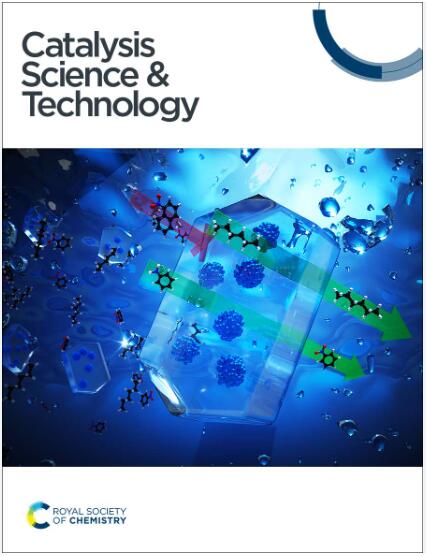Electrooxidation of ethylene glycol coupled with hydrogen production on porous NiO/Ni@NF nanosheet electrocatalysts†
IF 4.4
3区 化学
Q2 CHEMISTRY, PHYSICAL
引用次数: 0
Abstract
Electrooxidation of small organic compounds plays a crucial role in clean and efficient energy. This technology has the potential to transform waste materials into useful fuels and chemicals for renewable energy applications. Recently, ethylene glycol (EG) has gained considerable attention due to its high energy density, making it a great fuel for direct alcohol fuel cells. EG electrooxidation has attracted significant interest as an alternative hydrogen energy source to water splitting due to its sustainability and cost effectiveness. In this study, porous NiO/Nix@NF nanostructured catalysts were synthesized to enhance alkaline EG electrooxidation reactions. Electrodeposition was employed to grow these NiO/Nix structures on nickel foam (NF). The electrochemical characterization results indicate that the porous NiO/Nix@NF catalyst exhibits an onset potential of 1.3 V vs. RHE for the electrochemical oxidation of EG in a 1.0 M KOH solution. Additionally, this electrocatalyst has a maximum electrocatalytic activity of 121.6 mA cm−2, 4.5 times greater than that of the bare Ni@NF catalyst (27.2 mA cm−2). Moreover, Ni/NiO@NF demonstrated excellent electrocatalytic performance for both cathodic and anodic reactions, including EG electrooxidation and hydrogen evolution reaction (HER). The developed NiO/Nix@NF materials catalyzed EG electrolysis with a faradaic efficiency of 45.5%, demonstrating their ability to facilitate electrolysis. The electrocatalytic activity of NiO/Nix@NF porous catalyst toward EG is adequate and stable. Therefore, it appears to be a promising option for using EG in fuel cells.
多孔NiO/Ni@NF纳米片电催化剂上乙二醇电氧化偶联制氢†
小有机化合物的电氧化在清洁和高效能源中起着至关重要的作用。这项技术有潜力将废料转化为可再生能源应用的有用燃料和化学品。近年来,乙二醇(EG)因其高能量密度而受到广泛关注,成为直接乙醇燃料电池的理想燃料。EG电氧化因其可持续性和成本效益而成为水分解的替代氢能源,引起了人们的极大兴趣。在本研究中,合成了多孔NiO/Nix@NF纳米结构催化剂,以增强碱性EG电氧化反应。采用电沉积法在泡沫镍(NF)上生长NiO/Nix结构。电化学表征结果表明,多孔NiO/Nix@NF催化剂在1.0 M KOH溶液中电化学氧化EG的起始电位为1.3 V。此外,该电催化剂的最大电催化活性为121.6 mA cm−2,是裸Ni@NF催化剂(27.2 mA cm−2)的4.5倍。此外,Ni/NiO@NF在阴极和阳极反应中均表现出优异的电催化性能,包括EG电氧化和析氢反应(HER)。所开发的NiO/Nix@NF材料催化EG电解的法拉第效率为45.5%,证明了其促进电解的能力。NiO/Nix@NF多孔催化剂对EG的电催化活性足够且稳定。因此,在燃料电池中使用EG似乎是一个很有前途的选择。
本文章由计算机程序翻译,如有差异,请以英文原文为准。
求助全文
约1分钟内获得全文
求助全文
来源期刊

Catalysis Science & Technology
CHEMISTRY, PHYSICAL-
CiteScore
8.70
自引率
6.00%
发文量
587
审稿时长
1.5 months
期刊介绍:
A multidisciplinary journal focusing on cutting edge research across all fundamental science and technological aspects of catalysis.
Editor-in-chief: Bert Weckhuysen
Impact factor: 5.0
Time to first decision (peer reviewed only): 31 days
 求助内容:
求助内容: 应助结果提醒方式:
应助结果提醒方式:


